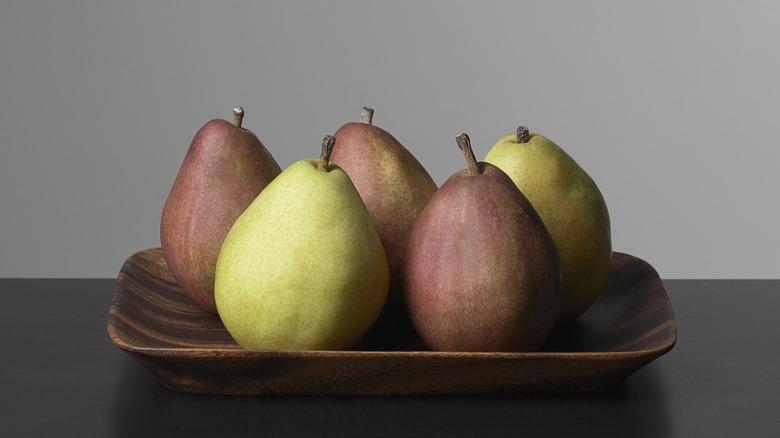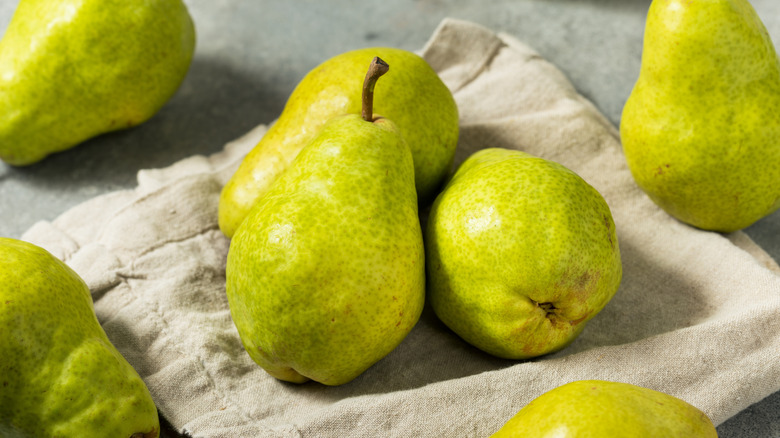Why The World's Most Popular Pear Isn't Commonly Found In Asia
The Bartlett pear, a plump, yellow-green beauty with a distinct bell shape, is known for its juicy bite and floral aroma. Originally discovered in 1765 by John Stair in England and known as Stair's Pear, the Bartlett was later renamed the Williams' Bon Chrétien ("Williams' good Christian") after being popularized by a nurseryman named Williams. In 1799, trees were imported to the United States and planted in Massachusetts, where farmer Enoch Bartlett unknowingly propagated them under his own name. By the time their European origin was identified in 1828, the name "Bartlett" had already taken hold in the U.S.
Bartlett pears thrive in regions with temperate climates, particularly in the U.S., Canada, and parts of Europe. In the U.S., California, Oregon, and Washington dominate pear production, with their combination of cool winters and warm, dry summers providing the ideal conditions for Bartlett trees to flourish. Yet, despite their popularity in the West, Bartlett pears are rare in Asia. The Asian palate tends to favor the thousands of pear varieties grown throughout the continent, such as Hosui, Shinseiki, and Nijisseiki, which have a crisper texture akin to apples. These round, sweet pears are prized for their refreshing crunch and milder qualities.
Bartlett pears are hard to harvest and transport throughout Asia
Asian agriculture prioritizes the continent's local pear varieties, leaving less room for nonnative species like the Bartlett. Furthermore, Asian pears, which are often more expensive due to the labor involved in their growing cycle and cultivation, have a firmer structure and longer storage potential than the softer, delicate-skinned Bartlett, making them better suited for shipping.
Outside of Asia, the Bartlett pear's adaptability and high yield have made it a favorite among growers, and its versatility in the kitchen keeps it popular with consumers and chefs. Bartlett pears are harvested when mature but still green. As they ripen at room temperature, their skin transforms from green to a vibrant yellow — a visual signal of peak ripeness.
Pears, no matter their heritage, are celebrated for their star power in sweet and savory recipes, including pies, cakes, galettes, pear breads, pear crisps, chutneys, salads, sandwiches, pasta dishes such as pear and gorgonzola penne, and as fall-inspired pizza toppings. The Bartlett's wide availability in Western markets ensures its status as a staple in pantries while its pleasant fragrance and soft texture make it a fruit worth enjoying in its simplest form. Although it hasn't made significant strides in Asia, the Bartlett pear's enduring appeal continues to shine around the globe.

